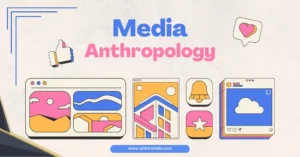AI Answer Evaluation Platform Live Now. Try Free Answer Evaluation Now
Medieval Archaeology
Medieval archaeology is the study of the material culture and societal changes during the period between the 5th and 15th centuries AD in Europe. This field of study has provided invaluable insights into the daily lives of people during this time, as well as into the politics, economics, and religious practices of medieval Europe.

History and Development
Medieval archaeology as a distinct field of study emerged in the late 19th century, with the excavation of medieval sites in Europe. The discipline was initially focused on the study of medieval castles and fortifications, but it soon expanded to include the study of all aspects of medieval society, including agriculture, crafts, trade, and religion.
Key Themes and Approaches
Medieval archaeology is characterized by a multidisciplinary approach that draws on a range of sources, including written records, art, and architecture, as well as material culture such as pottery, metalwork, and textiles. Some key themes and approaches in medieval archaeology include:
- Settlement archaeology: the study of medieval towns and villages, including their layout, architecture, and economy.
- Landscape archaeology: the study of how medieval societies used and transformed the landscape, including agriculture, forestry, and mining.
- Material culture studies: the study of everyday objects used by medieval people, including pottery, glassware, metalwork, and textiles.
- Bioarchaeology: the study of human remains to better understand diet, health, and disease in medieval society.
- Archaeology of religion: the study of medieval religious practices, including the construction and use of churches, monasteries, and other religious sites.
Notable Discoveries and Contributions
Medieval archaeology has contributed significantly to our understanding of medieval society. Some notable discoveries and contributions include:
- The identification of Viking settlements in Greenland and North America, which have shed light on Viking exploration and trade.
- The discovery of the Staffordshire Hoard, a collection of Anglo-Saxon gold and silver artifacts, which has provided insights into Anglo-Saxon art and craftsmanship.
- The study of medieval castles, which has revealed the strategies and tactics used in medieval warfare.
- The study of medieval towns and cities, which has provided insights into the development of urban life and trade during this period.
- The analysis of medieval diet and health, which has shown that medieval people had a varied and nutritious diet, but were also vulnerable to diseases such as tuberculosis and leprosy.
Challenges and Controversies
Like any field of study, medieval archaeology is not without its challenges and controversies. Some of the key challenges and controversies include:
- The limited availability of written records, which can make it difficult to interpret the archaeological evidence.
- The problem of interpreting the material culture of the period, which can be highly symbolic and have multiple meanings.
- The issue of bias in the archaeological record, which can be influenced by factors such as the social status and economic power of different groups in society.
- The ethical issues surrounding the excavation and display of human remains, particularly those of religious significance.
Conclusion
Despite these challenges and controversies, medieval archaeology remains a vibrant and important field of study. Through the excavation and analysis of material culture, medieval archaeologists are able to shed light on the lives and experiences of people in the past, as well as on the broader social, economic, and political developments of the medieval period. As such, medieval archaeology has an important role to play in shaping our understanding of the past and our place in it.
References
- Gilchrist, R. (2012). Medieval archaeology: understanding traditions and contemporary approaches. Routledge.
- Hadley, D. M. (2016). The archaeology of the medieval English village. Cambridge University Press.



